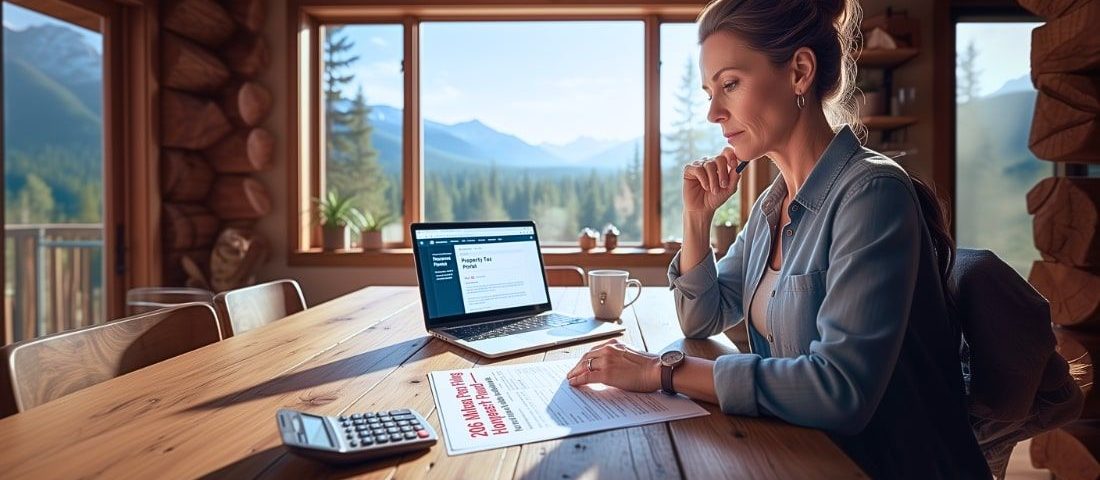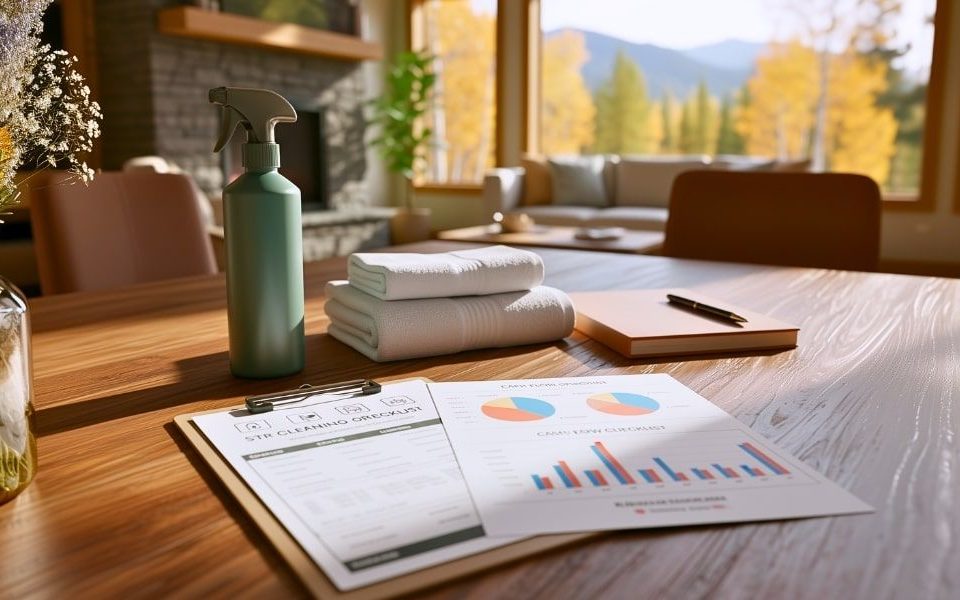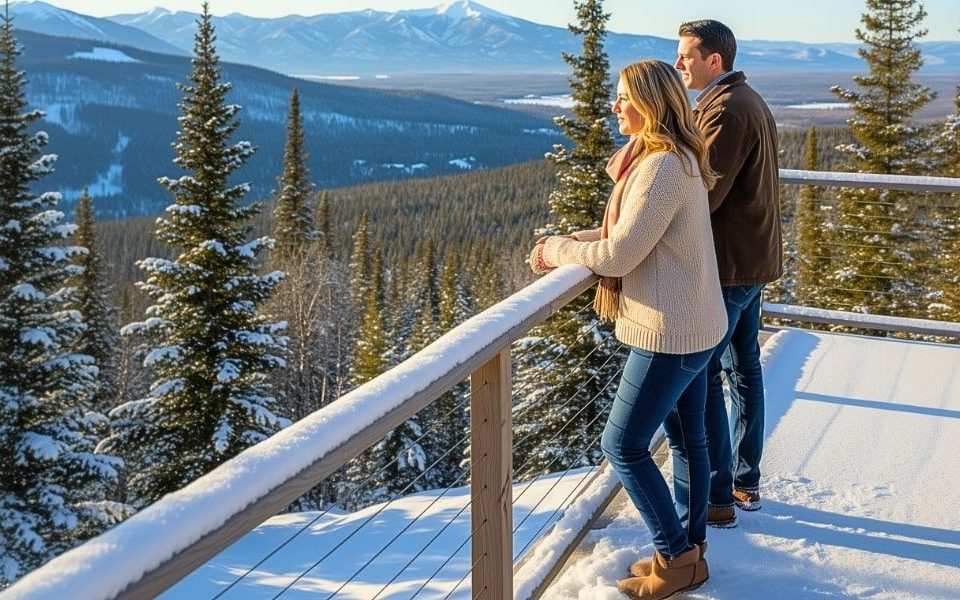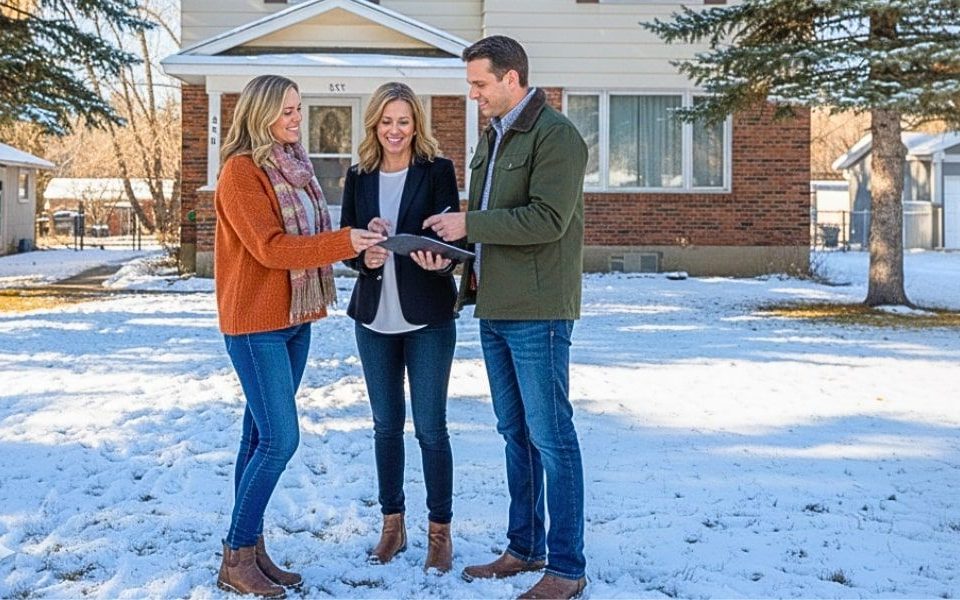
6 Best Camping Sites Around Lake Koocanusa
February 29, 2024
Why Winter Is the Smart Seller’s Season in the Flathead Valley
September 23, 2025Montana has recently revised its property tax rules. Starting in 2026, the difference between filing as a homestead or skipping it could mean thousands of dollars on your tax bill. Primary residences and long-term rentals will qualify for reduced, tiered tax rates. Meanwhile, taxes for second homes and short-term rentals are at a flat rate of 1.90%.
You’ll benefit if you live in your home or rent it out on 28-day leases or longer for most of the year. However, this will only be the case if you file correctly. Miss the filing, and your home defaults into the higher tax bucket.
Why This Matters for Flathead Homeowners
State projections indicate that by 2026, the average tax bill for an owner-occupied home is expected to decrease by approximately 18%. Long-term rentals are also expected to decrease by about 22%. Non-homestead properties, such as second homes and short-term rentals, however, are projected to see a 68% increase.
Numbers will vary by county, but the overall direction is clear. Rewards will be available to primary residents and long-term rentals. Meanwhile, short-term or part-time use will face higher costs.
What this means for you is simple: Filing for homestead status when eligible isn’t optional. It is essential.
What Changed in Plain English
If your property is a primary residence or long-term rental, you will face rates tiered by value. Taxes for homes valued up to the statewide median, estimated at around $378,000, will be at 0.76%.
The percentage increases gradually until it reaches 1.90% for properties worth four times the median and above. Second homes and short-term rentals? They go straight to 1.90% no matter the value.
Who Qualifies as a Homestead or Long-Term Rental in Montana?
To qualify as a homestead, you must live in the home at least seven months of the year. Also, it must be your principal residence. Long-term rentals qualify if the lease terms are 28 days or longer. You must also rent them out for at least seven months of the year.
You should automatically qualify if you received the 2025 homeowner rebate. That is, if you still live in your home for most of 2026. Everyone else needs to apply.
Deadlines You Cannot Miss
The application window for 2026 runs from December 1, 2025, through March 1, 2026. Long-term rental owners in particular must file during this time. However, homestead applicants should also mark the deadline if they aren’t automatically qualified. Miss the filing, and you’ll be taxed at 1.90% until the record is corrected.
The 6-Step Filing Checklist
- Confirm eligibility: Check if you meet the homestead or long-term rental definition.
- Gather your information: This should include your MT driver’s license, property address, and parcel number.
- Apply online: Do this through the Montana Property Tax Hub or at a local field office during the filing window.
- Long-term rental owners: Keep copies of leases proving the 28+ days and seven months stipulation.
- Review your notice: Make sure your property classification shows Homestead or Long-Term Rental.
- Ask for help if needed: Title companies, agents, and field offices can all guide you through the process.
The process isn’t complicated. However, it does require attention to detail and timing.
Special Considerations for Landowners in Montana
Agricultural (AG) and forest land come with their own rate structures. Taxes for qualified AG land are at 2.05%. Meanwhile, those for homesteads or long-term rental dwellings are at tiered rates. Taxes for second homes and short-term rental (STR) dwellings are at 1.35%.
Non-qualified AG land and forest land also apply different rules for homes versus land. If your property includes acreage, be sure to confirm the classification of each part.
Don’t Forget the Lodging Taxes
If you operate short-term rentals, you owe 8% in lodging-related taxes (4% facility use and 4% lodging sales tax). This figure is in addition to the 1.90% property tax rate. These taxes are separate and need proper registration and reporting.
A Quiet Risk: Elderly Neighbors
One risk we’re already seeing is that many seniors aren’t aware of these changes. They don’t usually track online notices. So, a simple postcard or phone call could help save them hundreds or even thousands on their property tax bill. If you know someone in this situation, check on them and encourage them to file.
A Story From the Flathead
Last winter, I visited with a couple in Kalispell. They were weighing whether to keep their second home as a family getaway or convert it into a long-term rental. Their kids loved skiing and summers at the lake. But when we ran the numbers, the tax changes made the decision clearer.
If they kept it as a second home, their annual tax bill would nearly double. By shifting to a long-term rental, they qualified for the tiered rate. They saved thousands each year and still visited on weekends when no one was leasing the unit.
The decision not only stabilized their tax bill but also contributed to local housing needs. This kind of scenario is exactly what the law intends. It rewards full-time use and long-term rentals while discouraging homes from sitting idle or acting like unlicensed hotels.
This means that you’ll need to sharpen your strategy. It doesn’t matter whether you’re a full-time resident, a long-term landlord, or a second-home owner.
Our Perspective Moving Forward
This shift rewards people who live in their homes and those who provide long-term housing. It penalizes properties operating like hotels.
In Flathead, that’s a significant reset. If you live here or manage long-term rentals, filing on time secures your reduced rate. If you own a second home or short-term rental, budget now for the 1.90% rate plus lodging taxes. Clarity is better than surprise.
FAQs on Montana’s 2026 Property Tax Shift
What happens if I miss the March 1 filing deadline?
If you don’t file by March 1, your property will default to the non-homestead classification. You will pay taxes at a rate of 1.90%. Although you can correct it later, you may owe the higher rate until the change is processed.
Do I need to reapply for homestead status every year?
No, once you’ve filed and been approved, your property should remain classified unless your residency status changes or you move. However, you must always confirm the classification on your annual notice to ensure accuracy.
If I occasionally rent out my home, do I still qualify?
Occasional short-term rentals (like a few weekends a year) could jeopardize homestead or long-term rental classification. To be safe, keep usage consistent with one category. To qualify for the reduced tiered rate, avoid operating as a short-term rental.
How do I prove long-term rental status?
Keep signed leases that show tenants occupied the property for seven months or longer with a minimum 28-day term. Documentation is crucial if someone ever questions your classification.
What if my home value is above the statewide median?
The tiered rates increase as the value rises. Up to the median, you will pay taxes at the rate of 0.76%. Between one and two times the median, the rate is 0.90%. Between two and four times the median, it’s 1.10%. Beyond that, the rate caps at 1.90%.
Does this change affect agricultural land?
Yes, but differently. Taxes for qualified agricultural land are at a rate of 2.05%. If a dwelling on the land is a homestead or long-term rental, it uses the tiered rate. If it’s a second home or short-term rental, the tax rate is 1.35%.
Are short-term rental operators taxed twice?
Yes, in a sense. STR owners pay property taxes at 1.90% and also collect and remit 8% lodging-related taxes. The lodging taxes don’t replace property taxes. They’re in addition to them.
Can elderly or offline residents get help?
Yes, local Department of Revenue offices can walk them through filing. Neighbors, agents, and even title companies can often step in to help as well. Reaching out early can prevent costly mistakes.
Ready to Find Your Flathead Valley Home?
Buying in the Flathead Valley is about timing, but not the kind you read about online. It’s about knowing when a home fits your life and being ready to make that move with confidence.
At P3 & Associates, our goal is to provide you with the data, insight, and local perspective that you can’t find anywhere else. Together, we’ll ensure that you’re not just buying a property but finding your place in the Valley.
Start your conversation with us today, and let’s find the home that’s truly right for you.





